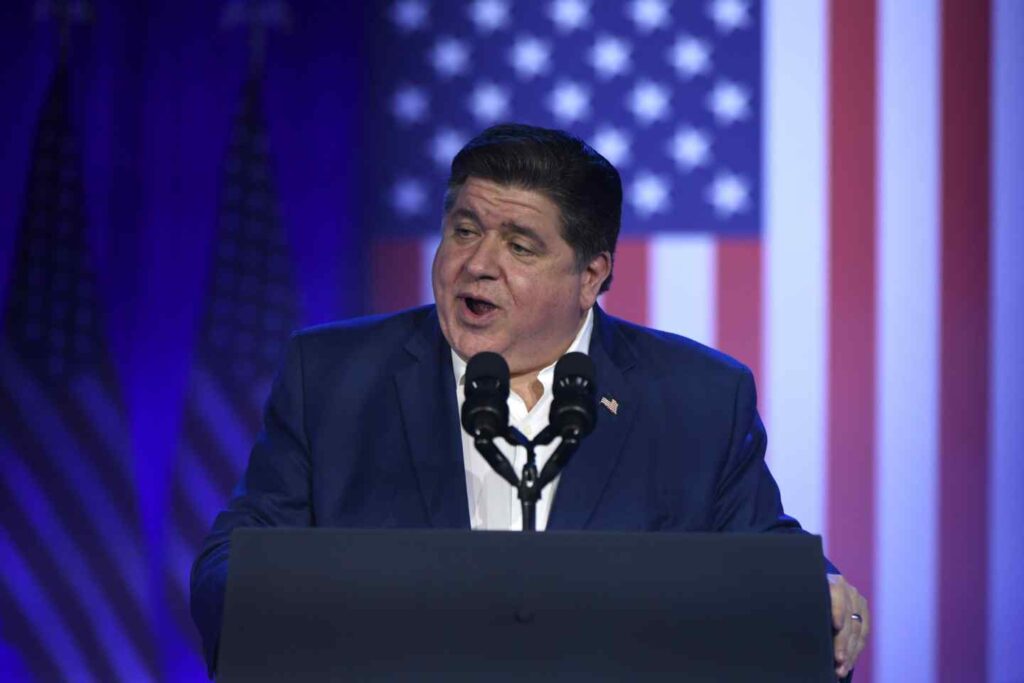Author: Eric G. Meyer
Illinois has wisely taken steps to legalize new nuclear power, but vague definitions and arbitrary limits could stifle its options for the clean energy transition.
After weeks of deliberation in the annual veto session, Illinois’ General Assembly passed SB 2473, which lifts the state’s decades-old ban on new nuclear power plants, a promising step towards securing the state’s clean energy future. Nuclear energy provides over 50% of Illinois’ electricity, with 11 reactors across 6 sites that form the crown jewels of its ultra-clean power system. However, the bill signed into law disappointingly restricts new construction to only small modular reactors (SMRs) under 300 megawatts, a move that could stifle meaningful climate and clean energy progress in the state.
In June, the General Assembly passed Senate Bill 76–which would have lifted the moratorium on all new nuclear power— with a supermajority. This achievement recognized the invaluable role that nuclear power, both existing large reactors and potential new builds, plays in achieving deep decarbonization. However, Governor Pritzker vetoed the bill, citing concerns about ambiguous definitions and potential financial burdens on ratepayers. This critique overlooked that the Illinois Commerce Commission rigorously evaluates power plant proposals for economic viability and public interest and that Illinois operates in a merchant electricity market, where private companies, not ratepayers, bear the financial risk of new energy projects. This market structure already safeguards ratepayers, rendering the proposed cap redundant.
Additionally, the recently passed bill’s 300 MW threshold excludes promising projects from being built in the state. Natrium, for instance, is a 345 MW sodium-cooled fast reactor by TerraPower and GE Hitachi that aims to repower a retiring coal plant in Wyoming by the end of the decade. This transition would maintain employment levels while increasing wages and decreasing localized air and water pollution.
Westinghouse’s 1,110 MW AP1000 has the most supply chain and construction experience on the market, earned through hard lessons in Georgia. Illinois has several large single-unit coal stations that could be elegantly replaced by similar-sized nuclear units. Would it be more economical to build four SMRs or one large reactor to replace them? The option to seriously ask and answer that question is now closed by SB 2473.
NuScale, an early small modular reactor developer with substantial federal backing, recently withdrew plans to build a plant in Idaho after failing to secure enough electricity purchase agreements. Updated cost estimates that came in higher than initial projections drove the decision. This underscores the fact that we don’t have a crystal ball to foresee what will make the most sense financially. As the future unfolds, economic factors may favor large, medium, or small reactors. It behooves policymakers to make energy policy that is flexible, not narrow and restrictive.
Reducing barriers for all nuclear energy projects, regardless of the size, is neither a novel nor untested policy. Our neighbors to the north in Canada see value in building both large and small reactors. They are in the process of building four of GE Hitachi’s BWRX-300 units while envisioning an additional 17,800 megawatts of small and large nuclear by 2050.
The new law also empowers the Illinois Emergency Management Agency to oversee nuclear plants, despite the Nuclear Regulatory Commission (NRC)’s sole federal regulatory authority. Additional state-level rules risk illegal overreach while burdening new projects with duplication and uncertainty. This overreach into federal jurisdiction sends the wrong signal to companies considering investing in Illinois.
Other states exploring new nuclear should not view Illinois’ selective and restrictive approach as a model. While some compromise was needed, the best outcome would preserve regulatory jurisdiction, let nuclear innovators and utilities determine optimal sizing, and allow the market to select economic winners, rather than politicians.
Overall, Illinois’ recognition of nuclear power’s necessity is welcome. All parties agree nuclear must play a role in Illinois’ clean energy future. Other states should emulate this sentiment while learning from the law’s limitations. With pragmatism and commitment, a clean energy future fueled by abundant nuclear power is within reach.



